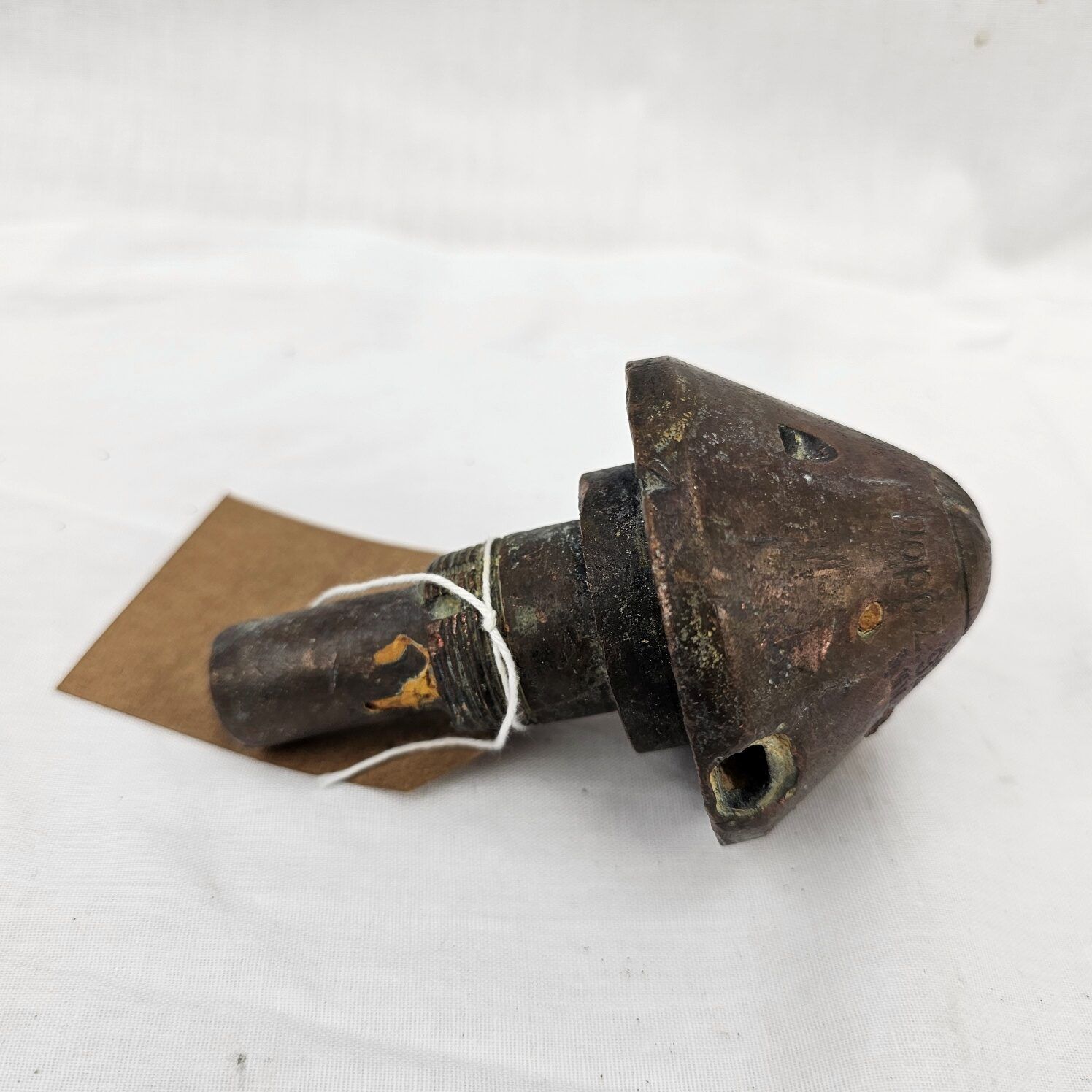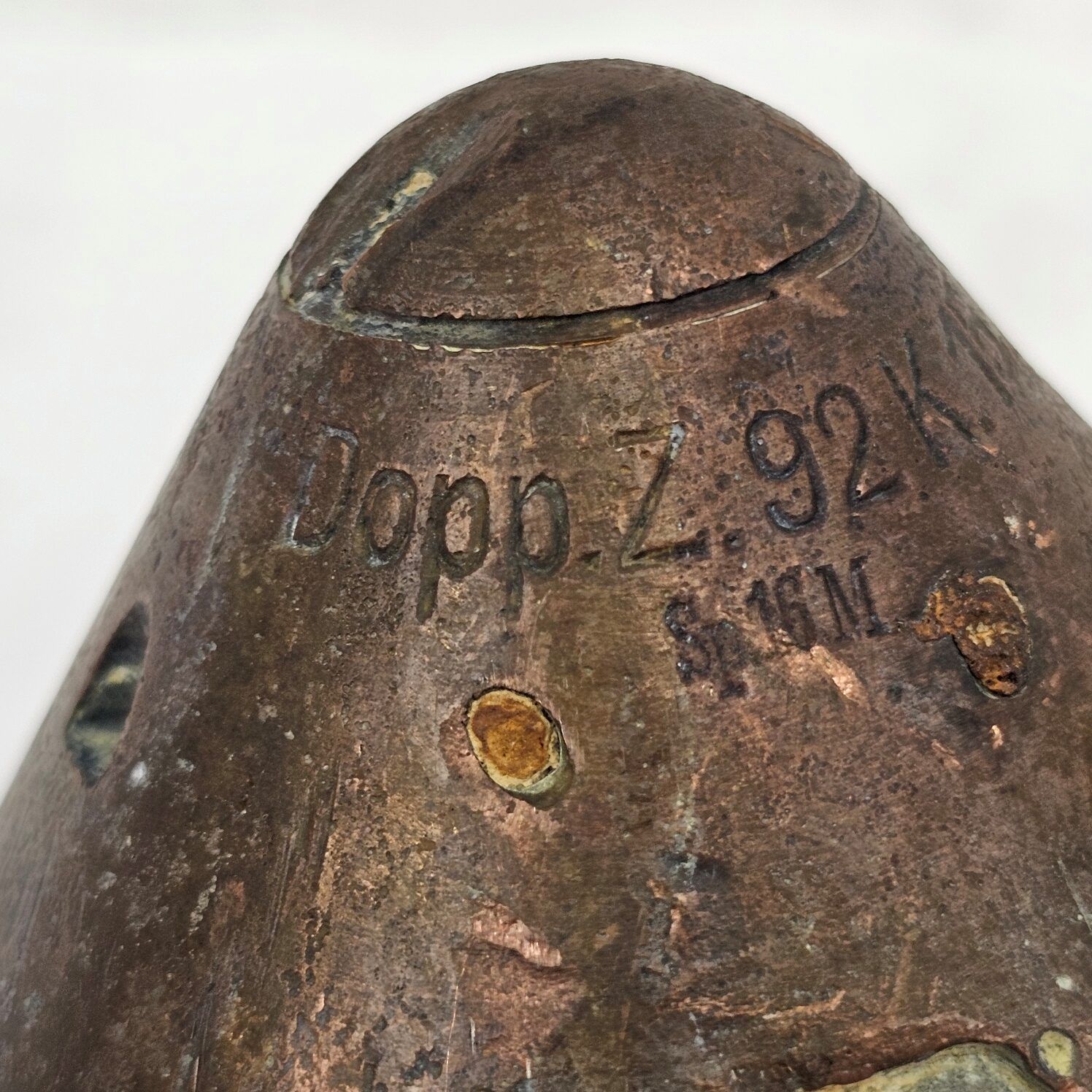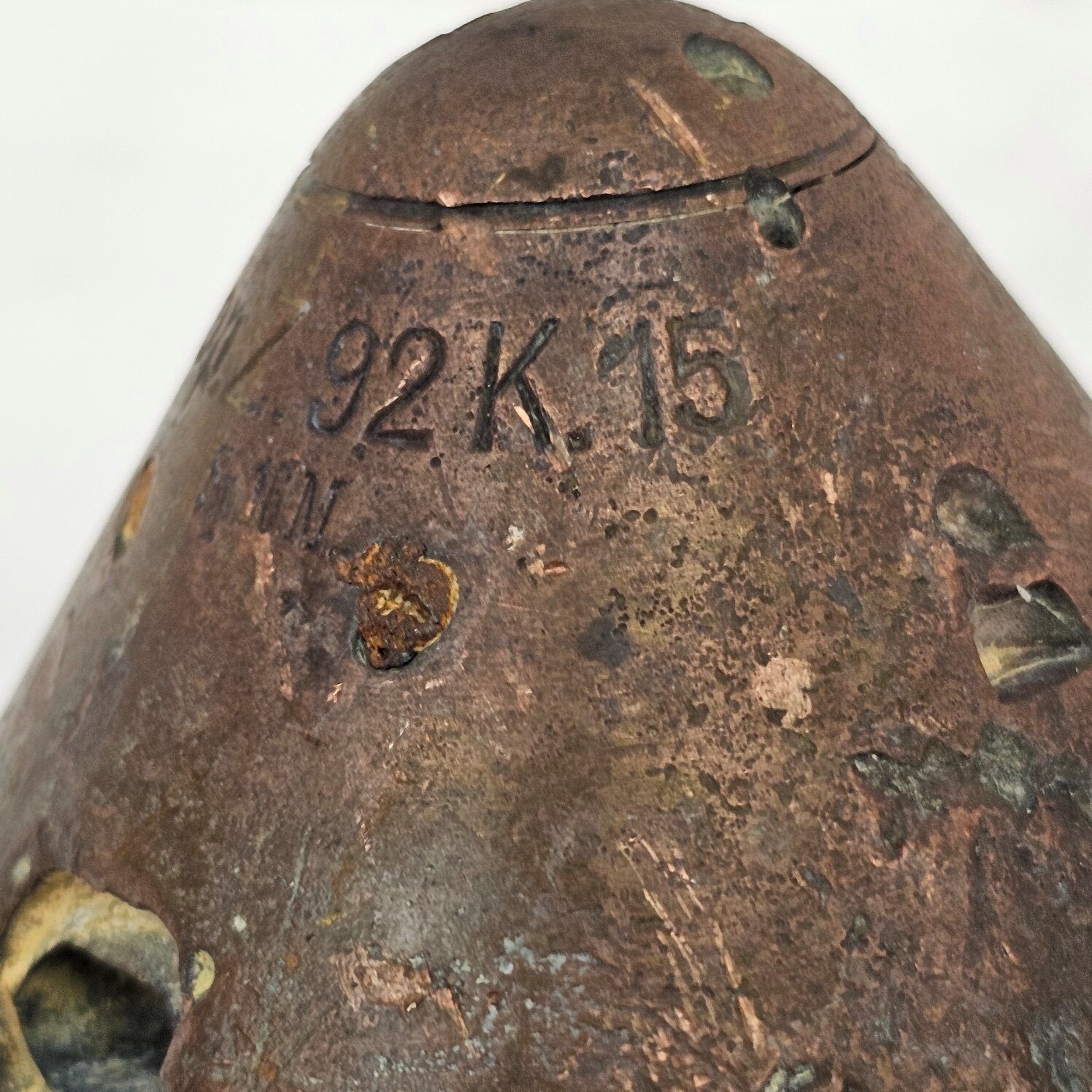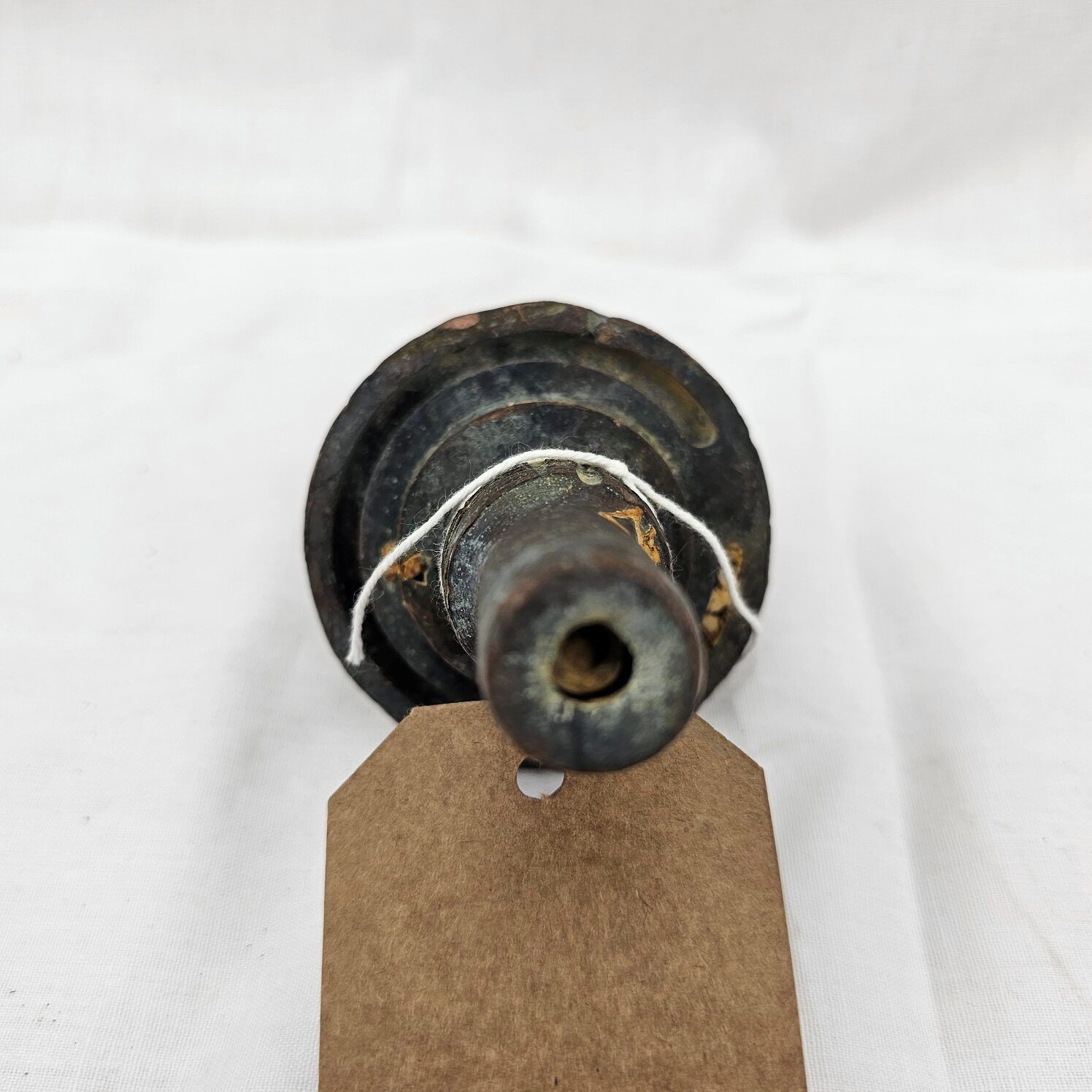~ WW1 German Dopp Z.92K Fuse ~
The Dopp. Z. 92K (Doppelzünder 92K) fuze was a significant piece of German ordnance technology used during World War I. This designation refers to a dual-purpose artillery fuze that combined both time and impact (percussion) functions, allowing for a high degree of flexibility in artillery operations. The “92” likely denotes the year of design or adoption, which was a common practice for naming military equipment at the time, and the “K” stands for “Kombiniert” (combined or dual), indicating its dual-function capability. Here’s a closer look at its design, functionality, and historical significance:
Design and Features
Dual Functionality: The Dopp. Z. 92K was designed to offer both time and impact detonation options. This allowed artillery crews to adjust the fuze depending on the tactical situation, choosing air bursts to target enemy personnel in trenches or open fields, or direct impact for destroying bunkers, fortifications, or equipment.
Mechanism: It typically featured a mechanical time fuse that could be set prior to firing, determining when the shell would explode after being fired. The percussion mechanism was designed to trigger the explosion upon direct contact with a hard surface or target.
Construction: Made from durable materials capable of withstanding the stresses of artillery fire, its construction reflected the technological capabilities and manufacturing precision of the time.
Operational Use
Tactical Flexibility: The Dopp. Z. 92K provided German artillery units with enhanced tactical flexibility. By effectively adjusting the fuze settings, they could maximize the effectiveness of their artillery fire, adapting quickly to changing battlefield conditions.
Strategic Impact: The ability to tailor artillery shell detonations more precisely helped in achieving strategic objectives, such as softening enemy defenses before an infantry assault, disrupting supply lines, or counter-battery fire.
Challenges and Innovations
Complexity and Reliability: Incorporating both time and impact detonation mechanisms in a single fuze presented challenges in terms of complexity and reliability. Ensuring consistent performance under the variable conditions of the battlefield required precise engineering and quality control.
Evolution of Artillery Tactics: The use of fuzes like the Dopp. Z. 92K reflected and contributed to the evolution of artillery tactics during World War I. It demonstrated a shift towards more sophisticated and adaptable use of artillery fire in response to the static nature of trench warfare.
Legacy
Advancements in Military Technology: The Dopp. Z. 92K is an example of the rapid advancements in military technology that characterized World War I. The conflict saw significant innovation in weapons, ammunition, and tactics, driven by the demands of modern, industrialized warfare.
Influence on Subsequent Designs: The operational experiences and lessons learned from using the Dopp. Z. 92K influenced the development of later artillery fuzes, continuing the trend towards greater versatility and effectiveness in ordnance.
The Dopp. Z. 92K fuze, with its dual-function capability, represents a critical step in the evolution of artillery munitions technology during World War I. It underscores the importance of innovation and adaptability in shaping the outcomes of military engagements.











